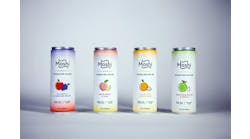It isn't surprising that Americans are more conscious of the price they pay for food, but it is increasingly becoming almost as important as taste, according to the Washington, D.C.-based International Food Information Council (IFIC) Foundation's sixth annual 2011 Food & Health Survey of 1,000 American adults over a two and a half-week period in March and April of 2011.
While taste remains the top attribute (87 percent), 79 percent of consumers say price impacts their decision when deciding which foods and beverages to purchase, a six percent increase from 2010 and a noteworthy 15 percent increase since 2006, according to the survey. While healthfulness (66 percent), convenience (58 percent) and sustainability (52 percent) play roles in consumer decision-making, no other motivator rose at the same rate as price over the past five years. It's notable that these trends are consistent with what drives Americans' menu decisions at restaurants: taste (69 percent) and price (61 percent) are ranked as the top two motivators. Americans also say that lower prices are the top driver that would lead them to make more healthful choices when shopping for food.
"The economy seems to be having a significant effect on what people look for when buying food," says Marianne Smith Edge, MS, RD, senior vice president of food safety and nutrition at the IFIC Foundation. "While Americans will almost always choose foods that taste good first, they're certainly looking for affordable, healthful foods as well."
[pullquote]Significantly fewer Americans are concerned about their weight status when compared to last year; 50 percent describe themselves as overweight in 2011 compared to 57 percent in 2010. More Americans perceive their diet as extremely or somewhat healthful (62 percent) when compared to 2010 (53 percent). At the same time, fewer report making dietary changes (59 percent in 2011 compared to 64 percent in 2010) and more report that their physical activity levels are sedentary (43 percent) – a significant increase from 2010 (37 percent). These contradictions are further evidenced by the fact that the number of people trying to lose or maintain weight (69 percent) has significantly decreased since 2010 (77 percent).
"This contradiction may indicate that Americans are being less hard on themselves and less critical of their health and well-being than in past years, despite an environment in which improved health and wellness is increasingly discussed from the media to government to the dinner table," says Carrie Dooher, director of trends and consumer insights at the IFIC Foundation. "This would be consistent with current trends toward small indulgences and a shift in perception about food in which consumers are seeking to be empowered rather than educated about food, health and food safety practices."
Additional key findings include:
- Lack of Awareness of Healthful Living Initiatives beyond Dietary Guidelines -- Americans' awareness of the Dietary Guidelines for Americans increased (81 percent compared to 71 percent in 2010). Still, 95 percent of Americans could not name another "healthy living" initiative beyond the Dietary Guidelines for Americans or MyPyramid, such as First Lady Michelle Obama's Let's Move! Campaign.
- No Change in Sodium Concern -- Despite significant attention on sodium in the 2010 Dietary Guidelines for Americans, other sodium-reduction initiatives, and media, Americans' concern about sodium remains stable. A little more than half of Americans (53 percent) say they are very or somewhat concerned about their sodium intake, same as last year.
- Trust in the Safety of Imported Foods is Low -- Sixty-one percent of Americans believe that imported food is less safe than foods produced in the U.S., citing less regulation as the top reason. Trust in the safety of the U.S. food supply, however, remains stable; half of Americans are extremely or somewhat confident in the safety of the U.S. food supply, similar to previous years. The top U.S. food safety concern continues to be foodborne illness (50 percent).
- Americans' Food Safety Practices at Home Continue to Decline -- Even though eight in 10 Americans report following safe food handling practices, the numbers continue to decline. Seventy-nine percent of Americans say they wash their hands with soap and water when handling food, down from 89 percent in 2010 and 92 percent in 2008. Also declining, 71 percent report washing cutting boards with soap and water, down from 78 percent in 2010 and 84 percent in 2008.
- Calorie Confusion Remains -- Only nine percent of Americans can accurately estimate the number of calories they should consume in a day for a person of their age, height, weight, and physical activity. Additionally, almost half of Americans are unable to provide an estimate of how many calories they burn in a day (60 percent offer inaccurate estimates). Furthermore, the majority of Americans do not keep track of calories consumed or burned, citing numerous barriers, including extreme difficulty and a lack of interest, knowledge, and focus.
- Americans are More Receptive to Positive Food Messages -- Despite the popularity of some "food rules" which suggest certain foods to avoid, Americans more and more say they would rather hear what to eat (63 percent) instead of what not to eat. The interest in positive messaging rose seven percent since 2009 when the Survey last polled Americans on this sentiment. www.FoodInsight.org

